Published Feb 18, 2023
What Space Seed and The Search for Spock Taught One Fan About Relationships
A most unlikely Valentine's Day episode.
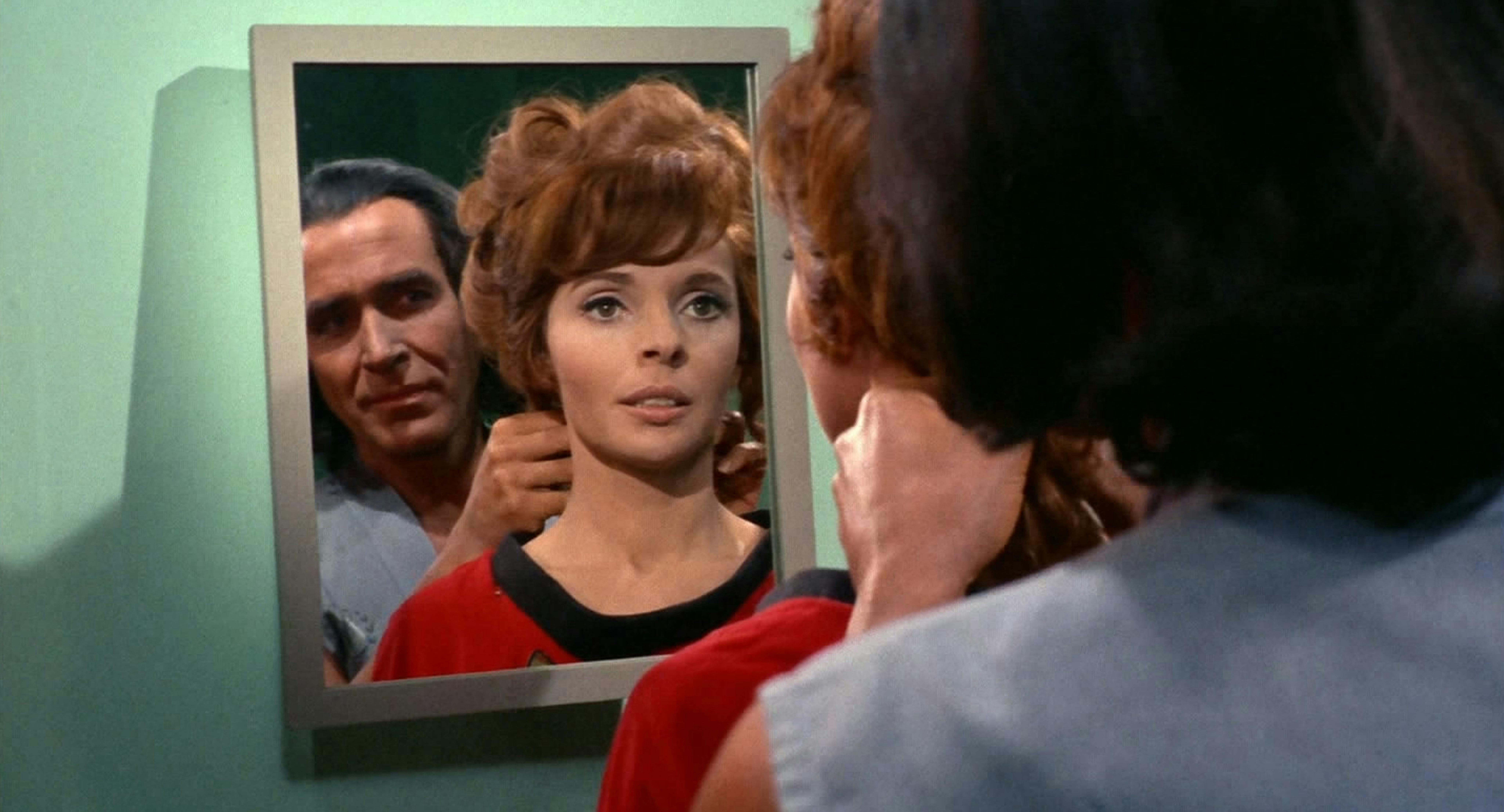
StarTrek.com
With Valentine's Day this week, we’re celebrating love in all the forms it takes throughout the quadrants. L(ove)LAP?
On the occasion of this Valentine's Day, I was struck by the recollection of some of Star Trek's more romantic moments. There were some that had a tremendous impact on me as a kid. As a middle-schooler I had an avid interest in Star Trek, and I was developing an equally avid interest in speaking with girls in my class and in my neighborhood. Unfortunately, the aforementioned girls had less than zero interest in speaking with me. The typical awkwardness and halting first efforts on my part were laughably poor and the results demonstrated it conclusively. I can’t say I blamed them, even at the time. I needed some guidance.
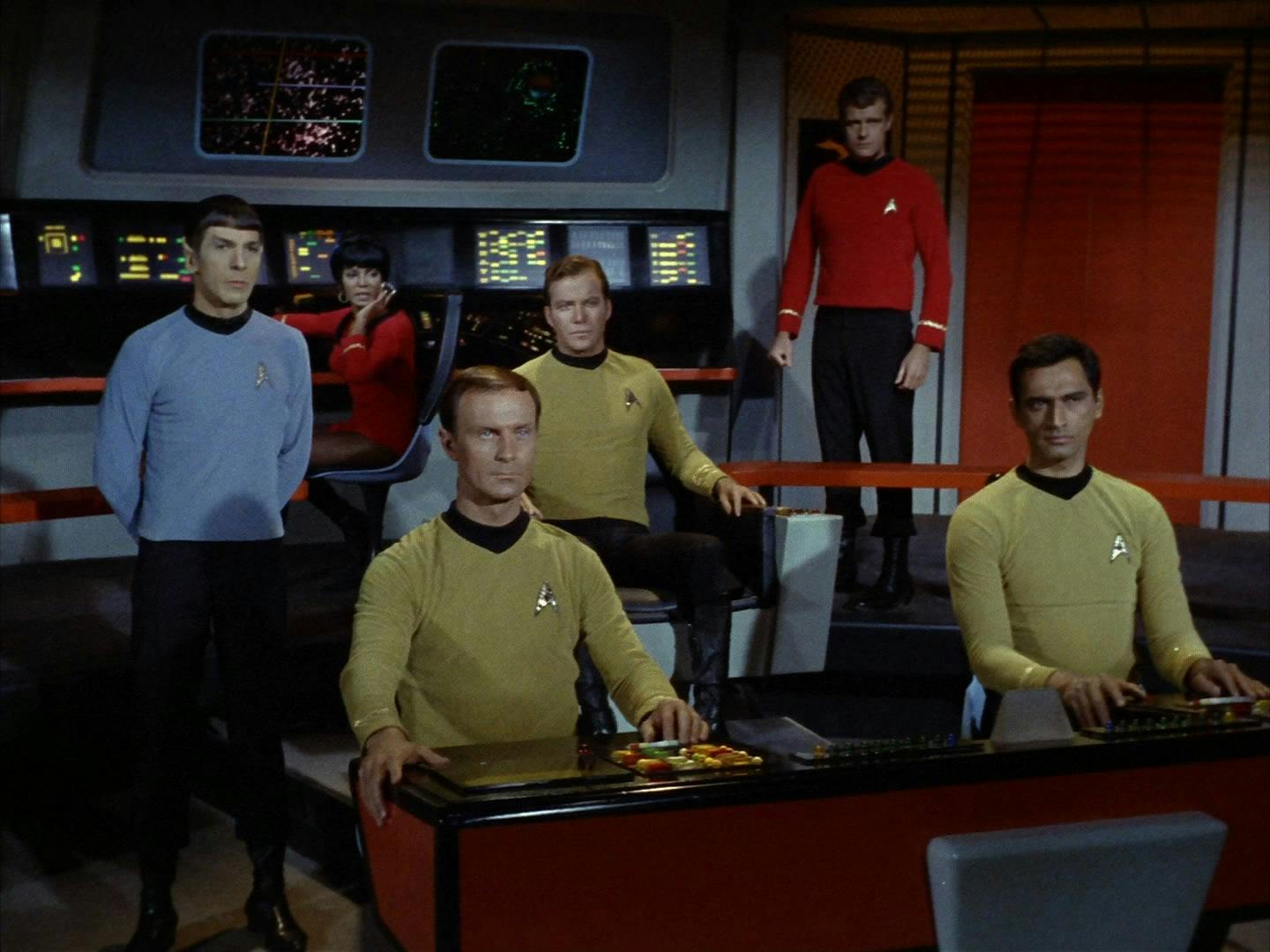
StarTrek.com
That said, I didn't feel like I wanted to talk to my parents about this, and my friends were well-meaning but equally as befuddled. Being an engaged Star Trek fan, I retreated from these initial attempts and reconsidered my approach. I thought about my TV heroes from Star Trek: The Original Series and what they might do. Kirk was too brash for me. Spock was too disinterested, except during the events of “Amok Time,” which seemed a bridge too far for middle school. McCoy did have a few moments, but they were slim pickings. And Scotty had little room for anyone besides the ship. Confounded, I let it go and decided to have a think on what to do.
Growing up in New York City, Star Trek was on WPIX, channel 11, almost every night at 6 PM. After homework and dinner, I'd sit cross-legged on the floor in the bedroom and watch whatever episode had been selected for that day. It was my daily ritual and something that I looked forward to each evening. The adventures of the original cast showed me a future where things weren't just OK, they were conclusively better than today in almost any way my tweener brain could conceive.
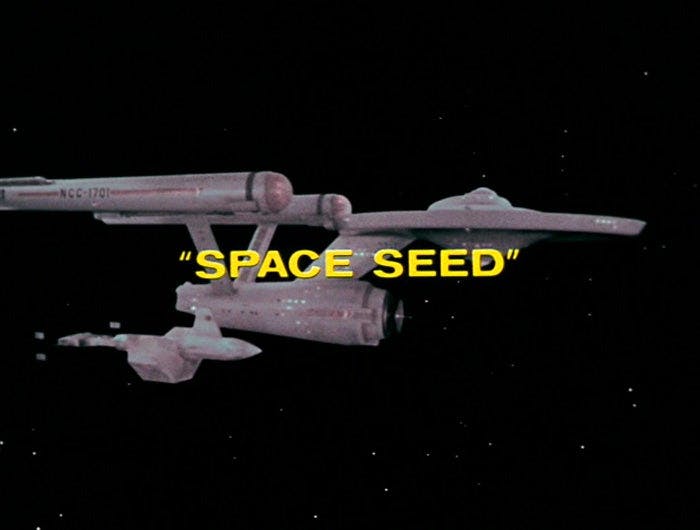
StarTrek.com
In a stroke of logic that only a kiddie Star Trek fan could justify, I decided to see if I could discern a new strategy from whatever episode was on that night. To my shock and horror, it was “Space Seed.” Knowing all the classic episodes almost by heart, I didn't think I was going to discover anything useful here. But I had my plan set and I was committed. One of the things I had learned from Captain Kirk was not to back down from a course of action once I was convinced of its rightness. In this case, I was especially determined I was on the proper path since it seemed like a plan that was positively Spockian in its logic.
For those who may not recall, this was The Original Series episode that introduced Khan Noonien Singh of The Wrath of Khan fame. He was found in a sleeper ship along with almost 80 others after being in hibernation for 200 years. Assisting in his acclimation to the 23rd Century is Starfleet Officer Lieutenant Marla McGivers. In the episode, Khan and McGivers have five scenes together. The first is on the DY-100 class Botany Bay in the hibernation chamber. McGivers is quite taken with the idea of meeting this person from history and it's apparent to all the landing party that she's not fully objective about this mission. And it's easy to fathom why. Any historian with the opportunity to interview an actual witness to events obscured by the mists of history would be covetous of the chance to do so.
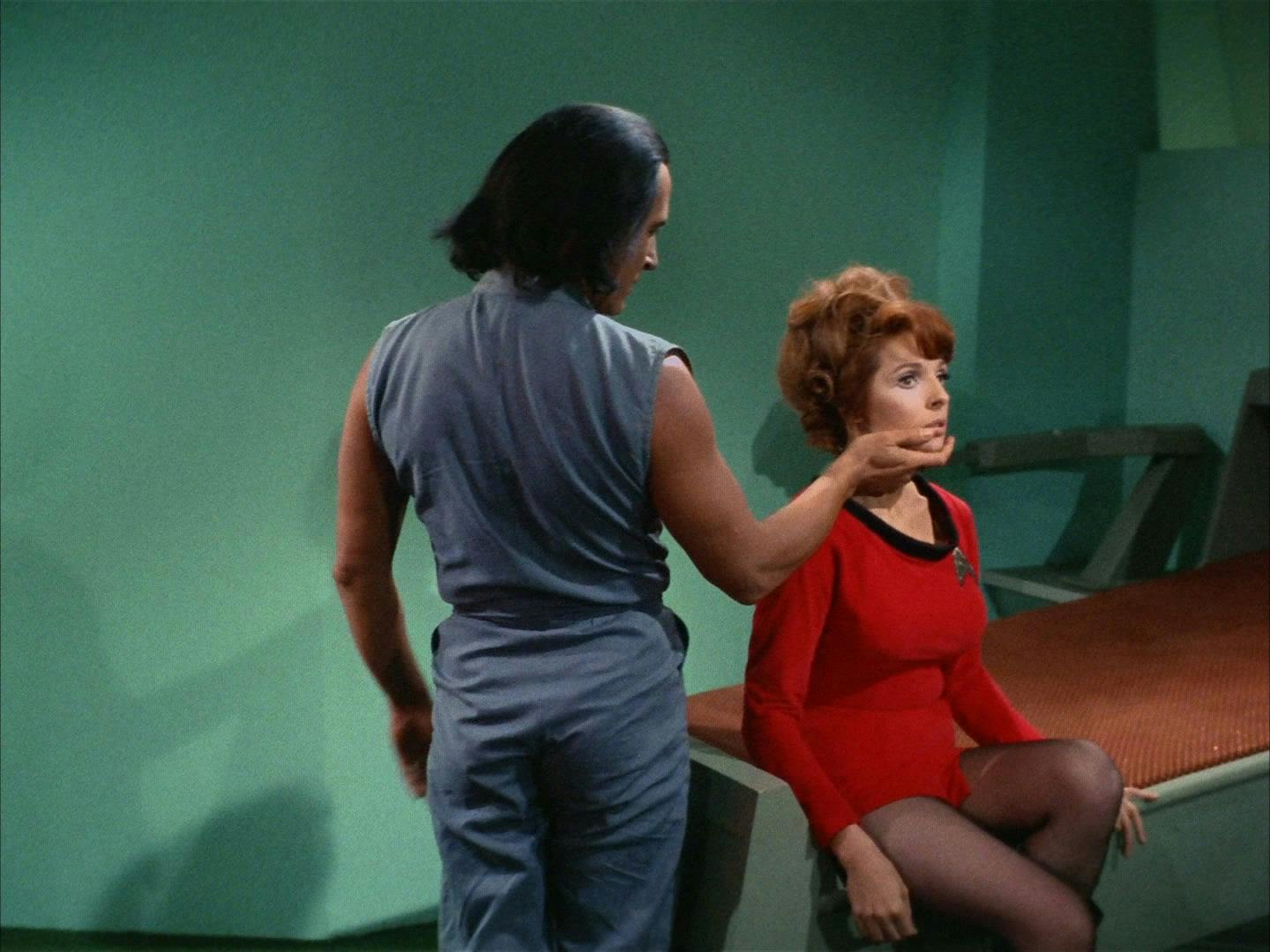
StarTrek.com
As we all know from the episode, that initial impression of McGivers' interest didn't hold up. In the first scene between McGivers and the newly awakened Khan, we see a dominating and callous man treat a woman in the most patronizing and demeaning way. Upon being commanded by him to "sit and entertain me," she does not reject this offensive dictate outright, but instead complies. She allows him to adjust her hair while he spouts off stereotypical and belittling comments.
While young John couldn't figure out how to constructively talk with girls, I knew reflexively that Khan was the opposite of what anyone should aspire to be in a relationship. I was disgusted by his bravado that he seemed to derive from his success as a dictator and his engineered “superior” genetics. And even more so, I knew that a partner who found that desirable would not be one that I would want to pursue. McGivers seemed to be in love with the dream of who she imagined this man to be, rather than the person in front of her. I couldn't see it any other way, especially at the time.
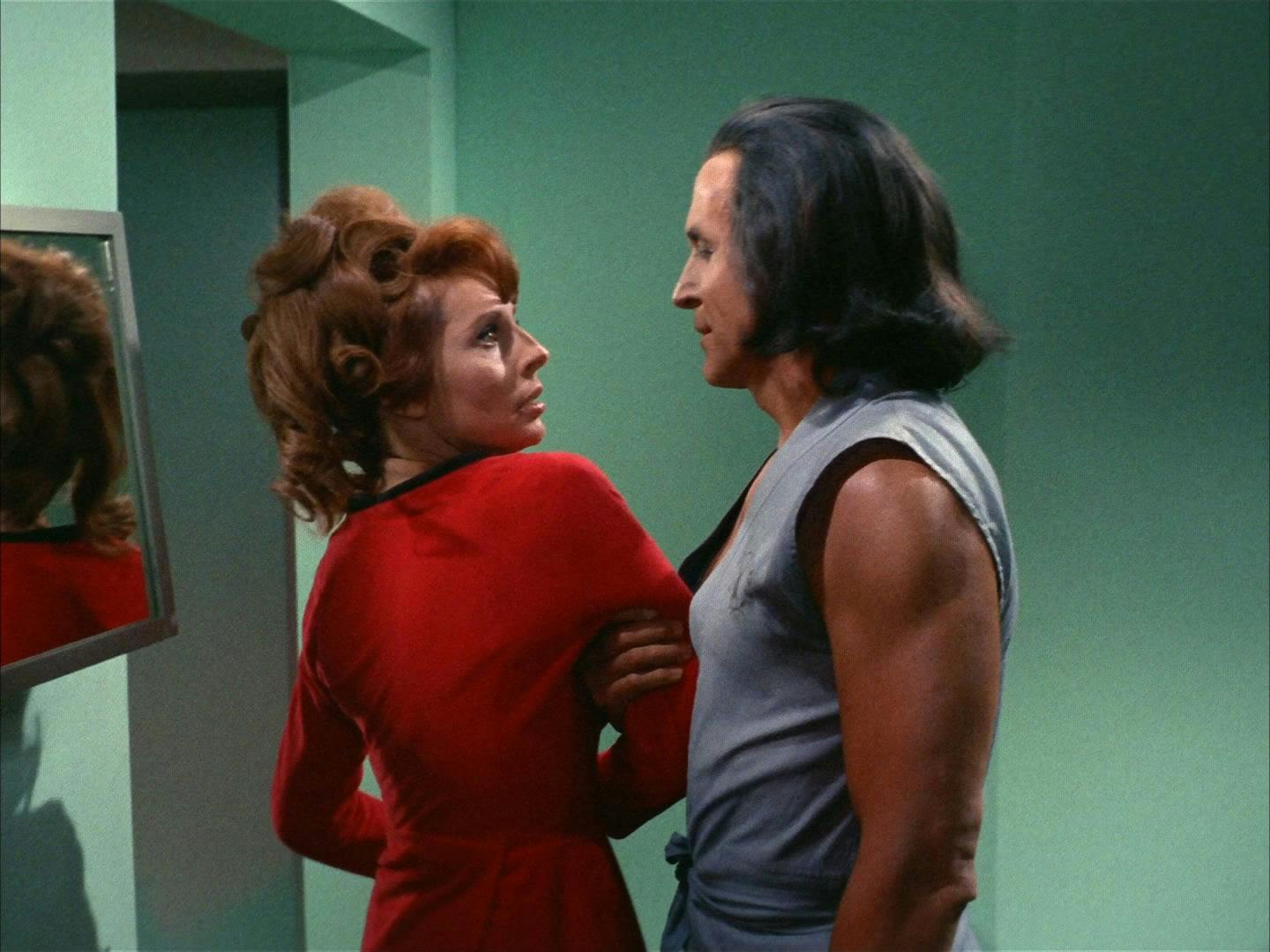
StarTrek.com
Giving the episode a more critical watch, I was stunned that at her second encounter with him in her quarters, she acceded to his requests for a new hairstyle and didn't call out his boorish advances, but yielded to them. My juvenile brain couldn’t comprehend why she would act this way. It was not something with which I was familiar. As I thought on it, I realized that it didn't matter. Acting like Khan, even a little bit, was beyond my ability and more importantly, my desire. There was nothing aspirational about that man as a leader, as a romantic partner, or even as a person. It was clear enough that even I could see it as a child.
In their most telling scene together, Khan is mercurial and abusive. He commands that McGivers ask to stay in his presence. Veins on his hands visibly pulsing as he forces her to her knees, he demands that she “open her heart” to him. As a child, I couldn’t even process such cruelty between alleged romantic partners. Years later, I am stunned that such a shocking and cruel scene ever made it onto the TV screens of the day, given the broadcast standards of the time.
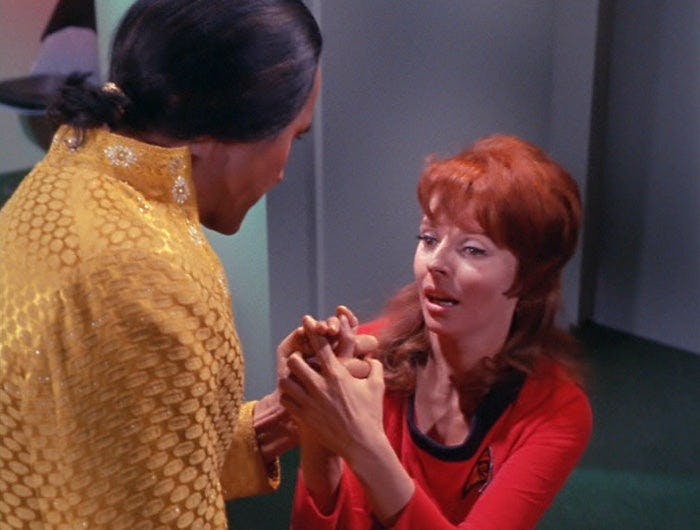
StarTrek.com
Furthermore, when offered the chance to become a full-fledged mutineer for Khan, the lieutenant commits to the task in the most stunning betrayal by any Starfleet officer we had ever seen in Star Trek up to that time. All for the feelings that she imagined that she had for this relic from the past whose time had never really come and was positively long gone by the time of the show.
I didn't know what it was to have a girlfriend. I didn't even know what it was to have a date at that time. But I knew that I was being shown a perfectly contrary example to all that I aspired to have and to be. Khan was the perfect model for what to avoid. This was exactly the kind of situation I wanted no part of in my life.
This conclusion did leave young John with some information, but not enough. As Mr. Spock said in the TOS episode “The Immunity Syndrome,” "No analysis due to insufficient information." I had to leave my cogitating for now and perhaps return to it later when I had accumulated more data.
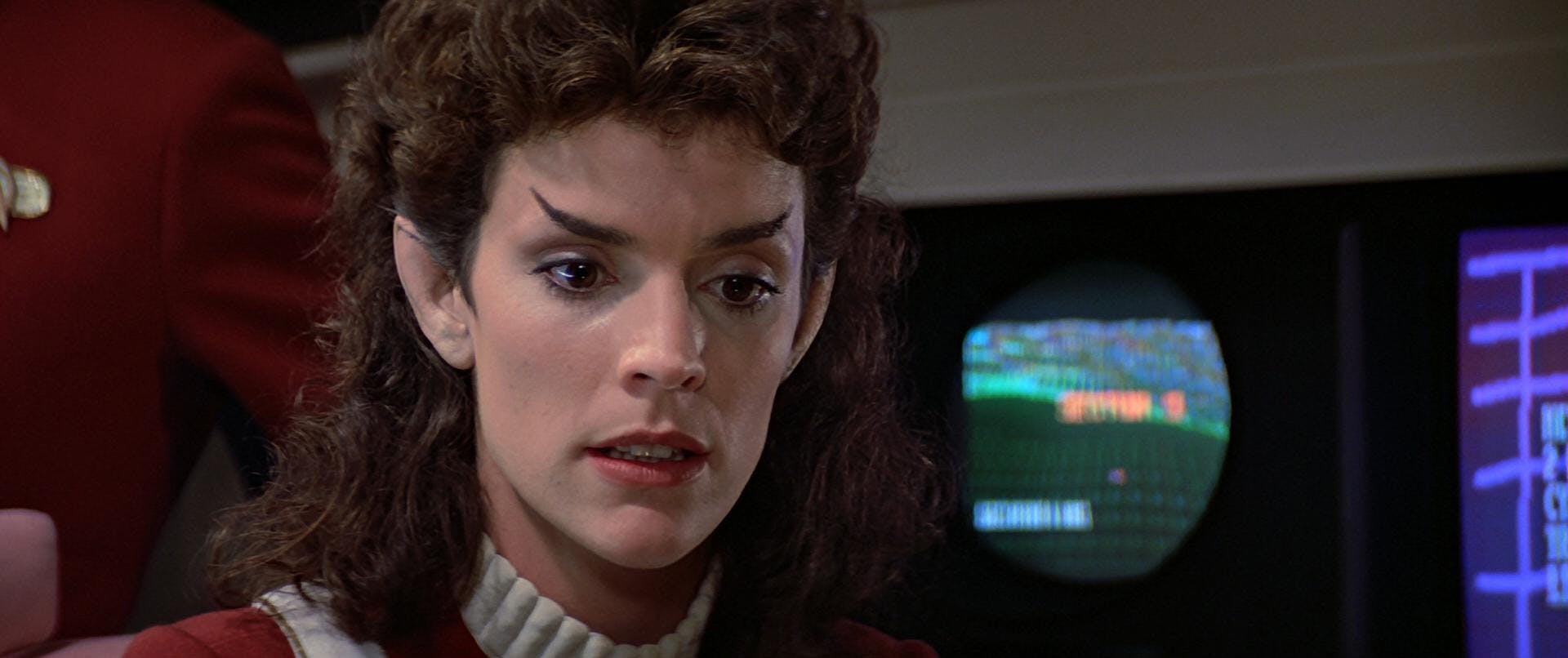
StarTrek.com
Around 1984, Star Trek incidentally provided awkward, youthful, bumbling John with another model. In Vonda N. McIntyre's novelization of Star Trek III: The Search for Spock, she had either taken some extreme liberties with the source material or was working off of information that never made the final cut of the film. First among these is the premise that the Saavik character is half-Vulcan and half-Romulan. Certainly, an intense mix, she was from a long-forgotten colony world and was essentially a feral child until she was saved by the Federation. Spock, having been part of the rescue operation, becomes her benefactor and eventually her sponsor into Starfleet.
In McIntyre's wonderful novelization, the action begins just a day or two after the end of Star Trek II: The Wrath of Khan. Carol and David Marcus, along with Saavik, are still on board the Enterprise and everyone's anguish is still raw and grievous. The very first scene in the novel is a wake for Spock, Scotty’s nephew Peter Preston, and the others who were lost, both in the several battles between the Enterprise and the Reliant, and on Regula One. It’s in this setting where David and Saavik have a private conversation on the nature of grief. She doesn’t understand the purpose of the wake and she rightfully decides that Spock would have found the whole thing illogical and she knows he would not have approved.
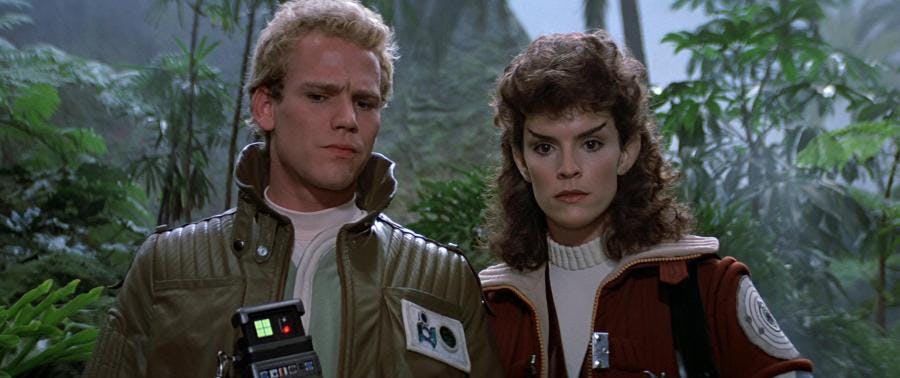
StarTrek.com
Saavik and David are uncertain, yet open with each other. David tries to help Saavik understand the human need for sharing grief and that’s when a memory of Spock pushes to the front of her thoughts. It was when he had told her that she was unique, and she must find her own path. In light of that recollection, she invites David to her quarters in a most un-Vulcan moment.
In the rest of the novel, we see a tentative young couple exploring their feelings and the beginnings of a relationship. For me at the time, it was most unexpected given the story we saw in the film. But I took a few lessons from those scenes. They had a playfulness that I thought was most endearing and surprising from the Saavik character given her disposition for emulating Vulcan behavior. They were frank in how they spoke about their wants and desires and were respectful with each other. While there were some troubles later on the topic of protomatter, they were still much closer to what I had imagined as a relationship of equals than what I had seen between Khan and McGivers in "Space Seed."

StarTrek.com
As a young kid, it was apparent to me that this was the inversion of the Khan and McGivers relationship. Where they had been cold and joyless, David and Saavik were generous and warm with each other. In the novel, the two characters treated each other as equals, whereas Khan demanded (and received) obeisance from McGivers. Truly, these were opposites and they were two case studies in different portrayals of passion in Star Trek for my young self.
Kids then, and today as well, take in a considerable amount of media. The effects can vary from the salutary to the deleterious. In my case as a boy, Star Trek showed me the perils of unhealthy dynamics in a relationship and at the same time provided a more positive example that I found relatable. I dare say that my wonderful spouse of 14 years would agree that playfulness and whimsy have been hallmarks the whole time. I haven’t yet decided to tell her that it’s an aspiration I took from a Star Trek novel. I kept that tidbit in my Section 31 file.
I imagine that the writers and other creatives behind these two couples would not have entertained the idea that a young kid was evaluating several approaches to romance in consuming these two installments of Star Trek. But as with creating any art or media, once it’s released into the ether, the public will take what they will from it. And it’s an indisputable part of Star Trek’s appeal that even after 50 years, people are still watching it, evaluating it, and taking lessons from it for their own lives. The relevance is what makes it matter, even more so today. People of all ages and kinds watch the show and find meaning that applies to the here and now and that’s what makes Star Trek timeless, wonderful, and grand.
Steamy Star Trek Moments That Made Us Fall In Love
This article was originally published on February 11, 2020.
John Krikorian (he/him) is a husband and father residing in Las Vegas, Nevada. He is also the host of the Trek Profiles podcast. Find him on Twitter @TrekProfiles.
Stay tuned to StarTrek.com for more details! And be sure to follow @StarTrek on Facebook, Twitter, and Instagram.

